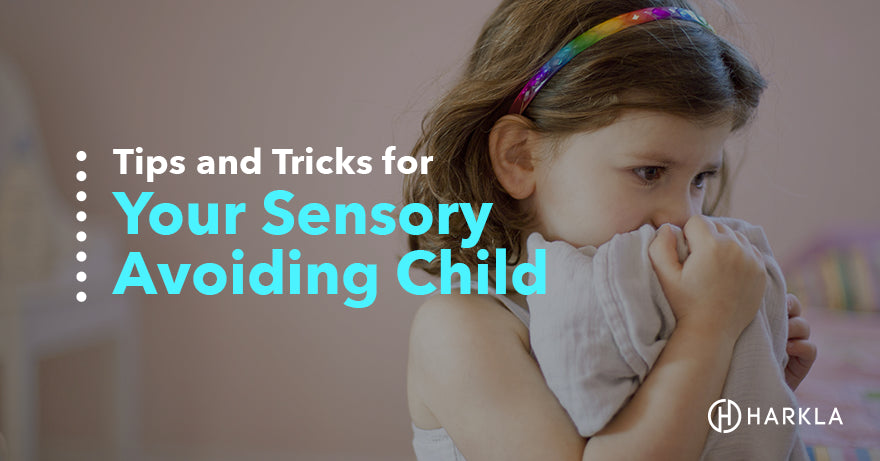Your Cart is Empty

The Spinal Galant Reflex is a primitive reflex present at birth that supports the birthing process and early motor development.
It normally integrates between 3-9 months of age. If it remains active beyond this period, it may contribute to challenges like fidgeting, posture issues, gait differences, clothing sensitivity, and bedwetting.
The reflex is triggered by light stimulation along one side of the spine, causing hip movement or wiggling away from the touch.
Unintegrated Spinal Galant Reflex may be influenced by factors such as pregnancy stress, C-section birth, low birth weight, limited tummy time, or sensory under-stimulation.
A simple Spinal Galant Reflex Test can be done at home by gently stroking down each side of the spine and observing the hip or body movement.
If the reflex appears active in older children, follow up with a pediatrician, OT, PT, or another professional trained in primitive reflex integration.
Activities like tummy time, crawling, rolling, natural movement, sensory play, vibration, heavy work, and alternative seating can help support reflex integration.
A retained reflex doesn’t mean something is “wrong” with your child; it just means their body may benefit from extra support and intentional movement experiences.
The Spinal Galant Reflex is one of many infant primitive reflexes - an involuntary movement pattern that we are all born with. The Spinal Galant is believed to play an important role in the natural birthing process. During labor, contractions stimulate the lumbar region (the lower back), which causes movement in the hips, thus helping the baby move down the birth canal. Additionally, “it also contributes to the development of the range of movements of the hips needed for crawling and walking.”
The Spinal Galant is triggered by stimuli to the back. This can be done by stroking down one side of the spine (while the infant is laying on their stomach), facilitating hip movement away from the stimuli. This can also be done while the child is in quadruped (on all fours). This reflex also plays a role in developing the vestibular system and is connected to the Asymmetrical Tonic Neck Reflex (ATNR), which also plays a role in the birth process. Urination is also frequently associated with the Spinal Galant Reflex.
The Spinal Galant is developed in utero at approximately 20 weeks. It should be fully developed at birth and should integrate (go away) between 3-9 months of age.
Although there is no one scientific method to ensure full primitive reflex integration, there are some things to consider when discussing the galant reflex integration

Let’s talk about sensory integration. By providing an infant with different types of sensory stimulation, new neural pathways will be developed in the brain, thus stimulating new movement and cognitive development. An article on sensory integration discussed that the engagement in sensorimotor activities promoted adaptive behaviors via neuroplastic changes - simply put, by experiencing different sensory activities, our brains can change and thus promote new behaviors!
So, what types of sensory activities should you provide to your newborn infant? Keep it simple!
Because every newborn is different and every experience is different, there’s no one way to guarantee that the Spinal Galant reflex will be successfully integrated by nine months of age. However, by using the above strategies, you can feel more confident that your baby is getting the sensory experiences necessary for potential primitive reflex integration.
A study looking at the persistence of primitive reflexes and associated problems in children identified these potential factors for unintegrated primitive reflexes, including the Spinal Galant:
Additionally, if a child has successfully integrated their primitive reflexes, a sudden or chronic bout of trauma, stress or injury can re-activate these reflexes.
While there is no guarantee for reflex integration, there are contributing factors to consider if your child has an unintegrated Spinal Galant reflex.
Because the Spinal Galant is directly related to the vestibular system and consists of a physical reaction, it directly impacts movement, balance, muscle tone, and coordination. As stated earlier, it also facilitates urination when stimulated.
Symptoms related to an unintegrated Spinal Galant in older children are:
A spinal galant reflex test can help you observe whether this primitive reflex is still active in your child. While this test is simple to perform at home, it should always be viewed as an initial screening tool, not a diagnosis. If you notice signs of a retained spinal galant reflex, follow up with a pediatrician or an Occupational Therapist trained in primitive reflex integration.
1. Start in a safe, comfortable position
Have your baby or child lie on their stomach on a firm surface. Babies can do this during tummy time. Older children should be relaxed and still.
2. Access the lower back
Gently lift clothing so you can reach both sides of the spine.
3. Apply light touch
With your fingertip, lightly stroke downward along one side of the spine, from the lower ribs toward the hip.
Repeat on the other side.
A positive spinal galant reflex test response may include:
The hip on the stroked side lifts or rotates
The body wiggles or pulls away from the touch
The child cannot stay still
One side responds more strongly than the other
These reactions are normal in infants under 3–9 months but may indicate a retained spinal galant reflex in older children.
For children able to be on hands and knees:
Stroke one side of the spine downward
Watch for hip shifting, rotation, or imbalance
Exaggerated movement suggests the reflex may still be present
If your child shows a strong or asymmetric response, especially alongside symptoms like fidgeting, bedwetting, posture issues, or clothing sensitivity, consider seeking support from:
A pediatrician
An Occupational Therapist
A Physical Therapist familiar with primitive reflexes
If your child exhibits any of the above symptoms/challenges, the first step will be to talk with your pediatrician. Discuss your concerns. If your pediatrician is familiar with primitive reflex integration, they may already have a plan of action ready. If your pediatrician is unfamiliar with primitive reflex integration, feel free to share what you've learned! If you ever feel uncomfortable or that your concerns are being pushed aside don’t be afraid to seek out a new pediatrician.
Many Occupational Therapists (OT) are trained in primitive reflex integration techniques. Seek one out! Talk with friends and family members to see if they know anyone specific. Use Facebook groups and Instagram to find someone who has training. Physical Therapists (PT), craniosacral therapists, and chiropractors may also know of primitive reflex integration. It can take some time to locate the right professional, so don’t give up!
Meanwhile, there are some different spinal galant reflex exercises and play activities that you can incorporate into your child’s daily routine that can help promote the galant reflex integration.
For babies, decreasing the amount of waking time spent in containers is the best way to integrate the Spinal Galant reflex. When baby is awake, provide natural movement activities and as much tummy time as possible.
If your child is young, under three years old, focus on developmental movements:
If your child is older, you can still focus on the same developmental movements and increase the challenges, as well as try some other activities.
If your child is struggling with some of the signs/symptoms associated with an unintegrated Spinal Galant reflex, try some of these strategies:
As you continue on your path through primitive reflex integration, keep in mind that your child is unique, and there's nothing wrong with them! Even if they have an unintegrated Spinal Galant reflex and seem to be struggling more than other children, your job is to help guide them along the way and provide as much support as possible.
You and your child are doing the best you can with what you have, so keep researching and keep trying new things until you find what works. Even then, keep searching because what works now might not work forever, especially as your child grows and develops through different seasons of life!
You can support integration through developmental movement patterns (tummy time, crawling, rolling), sensory-rich play, vibration, and activities that promote hip mobility and core stability. For older children, exercises like snow angels, animal crawls, and heavy work can help. For best results, work with an Occupational Therapist trained in primitive reflex integration.
Have the child lie on their stomach, then lightly stroke down one side of the spine from ribs to hips.
A positive response may include:
Hip lifting or rotating
Body wiggling away
Difficulty staying still
One side reacting more strongly than the other
For older children, you can also test in quadruped (hands and knees).
The reflex develops in utero around 20 weeks and is fully present at birth.
It should naturally integrate between 3–9 months of age.
Common spinal-level primitive reflexes include:
Spinal Galant Reflex
Spinal Perez Reflex
Flexor Withdrawal Reflex
Crossed Extension Reflex
These reflexes support early survival, mobility, and neurological development.
A retained Spinal Galant Reflex in older children may contribute to:
Excessive fidgeting
Bedwetting
Clothing sensitivity
Poor posture or scoliosis tendencies
Difficulties with sustained attention
Gait differences and motor coordination challenges
It can also influence learning and behavior by affecting posture and focus.
Some studies and clinical observations show a correlation between retained primitive reflexes, including the Spinal Galant, and attention challenges.
The reflex can trigger constant micro-movements or discomfort, which may look like restlessness, fidgeting, or difficulty staying seated, all common in ADHD presentations.
However, the reflex itself does not cause ADHD, and ADHD should only be diagnosed by a qualified professional.
Do you like to listen to your information? Make sure to listen to our podcast episode #103 which we dive deep on the Spinal Galant Reflex
Want to learn all about Retained Primitive Reflexes? Be sure to check out our Primitive Reflex Integration Training on Harkla.co!
Comments will be approved before showing up.


Shannon Twomey
January 07, 2025
WOW! I adopted my son at birth and he was exposed to a lot of in utero trauma…. He is almost 8 and still wets the bed every night and has every symptom you shared… The problem is that I can’t find any OT’s that will do the reflex integration.